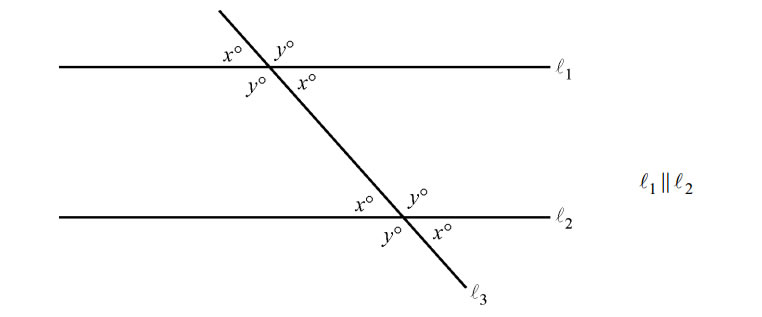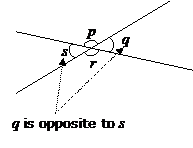

Lines and Angles
More Lessons for GRE Math
Math Worksheets
These lessons are part of a series on the quantitative reasoning section of the GRE revised General Test. In this lesson, we will learn:
- points, lines and planes
- angles
- parallel lines and angles
Points, Lines and Planes
Plane geometry is devoted primarily to the properties and relations of plane figures, such as angles, triangles, other polygons, and circles. The terms “point,” “line,” and “plane” are familiar intuitive concepts.
A point has no size and is the simplest geometric figure. All geometric figures consist of points. A point can be named by a single capital letter. The following is a diagram of points A, B, and M:
A line is understood to be a straight line that extends in both directions without end. We can name a line by picking any two points on the line.
A plane can be thought of as a floor or a tabletop, except that a plane extends in all directions without end and has no thickness.
Given any two points on a line, a line segment is the part of the line that contains the two points and all the points between them. The two points are called endpoints.
Line segment AB consists of points A and B and all the points on the line between A and B.
Line segments that have equal lengths are called congruent line segments. The point that divides a line segment into two congruent line segments is called the midpoint of the line segment.
This video explains and demonstrates the fundamental concepts (undefined terms) of geometry: point, line, plane.
Angles
When two lines intersect at a point, they form four angles, as indicated below.
In the figure, angles s and q are called opposite angles, also known as vertical angles. Angles p and r are also opposite angles. Opposite angles have equal measures, and angles that have equal measures are called congruent angles. Hence, opposite angles are congruent. The sum of the measures of the four angles is 360 degrees.
A right angle is an angle measuring 90 degrees. Two lines or line segments that meet at a right angle are said to be perpendicular.
An acute angle is an angle measuring between 0 and 90 degrees.
An obtuse angle is an angle measuring between 90 and 180 degrees.
This video illustrates acute, right, obtuse, straight, reflex, and full angles
Parallel Lines and Angles
Two lines in the same plane that do not intersect are called parallel lines. The figure below shows two lines, and that are parallel, denoted by The two lines are intersected by a third line, forming eight angles. Note that four of the angles have the measure x°, and the remaining four angles have the measure y°, where x° + y° = 180.

The following video shows angles formed by paralle lines and transversals.
Try the free Mathway calculator and
problem solver below to practice various math topics. Try the given examples, or type in your own
problem and check your answer with the step-by-step explanations.



We welcome your feedback, comments and questions about this site or page. Please submit your feedback or enquiries via our Feedback page.




